Click Here if you listened. We’re trying to gauge interest so only one question is required; however, there is a spot for feedback!
Read along below!
Some Simple Questions About Bees that I Can’t Answer
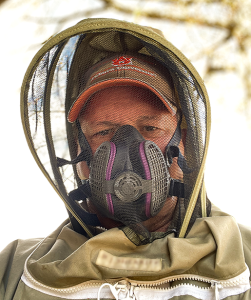 Can you?
Can you?
By: James E. Tew
I don’t know what I don’t know
Increasingly, as I have aged, I have been forced to realize that I do not know what I do not know. I tend to have some of my opinions and beliefs – for the moment. As I gain insight and experience, maybe some of my opinions and beliefs will need to be updated – or even eliminated.
Lazy drones
In my earliest years, I was taught that drones were laggards. They only ate food stores and did not work for the colony good (It is important for you to know that honey bees were wildly plentiful at the time. There was no concern for mating efficiency). In fact, I was told to destroy drone combs in order to keep my colonies at peak efficiency. That notion had to be updated. Drones are a vital reproductive component of a colony. (But wait, Jim. Shouldn’t I remove drone combs to reduce varroa populations?). Don’t go crazy, but four hundred – six hundred drones in a colony and during the warm season are a good thing. The colony wants a “normal” drone population.
Sleepy bees
During my entomology classes in the 70s and early 80s, I was distinctly told that insects do not sleep. Now, it is commonly accepted that insects – and our beloved honey bees – do routinely take naps (Klein, Barret A. and Thomas Seeley. Work or sleep? Honey bee foragers opportunistically nap during the day when forage is not available https://doi.org/10.1016/j.anbehav.2011.03.026). That notion of mine had to be updated.
On and on…
In my high school science classes, I was taught that atoms were the smallest component of all the atomic building blocks – there was nothing smaller. Duh, dummy. What about quarks and leptons? Even the smallest part has smaller parts.
In my third-grade class, my teacher said that we were lucky to live in the gulf areas of the U.S. We would never starve because the ocean had endless supplies of food. Yeah, right. Then later, eggs are bad for you. No, eggs are good for you. Drink coffee. Don’t drink coffee. Jogging is bad for your knees. Well hold on. Maybe jogging is good for you, for your circulatory system. Battery-powered hand tools are a fad. Not anymore. I love them. Latex paint is not as durable as oil paint. I can hardly even buy oil-based paints now. It seems that I am constantly updating and changing. In my old age, I seem to have beliefs and opinions – for the moment.
My beekeeping – for the moment.
Late in my life, my altered perception of my various opinions has affected my beekeeping psyche. So many things – so much science – that at first seemed so solid is now passé. It would seem that there are only a few remaining sure beekeeping havens. For instance, the old me would have boldly said, “Rest assured! You absolutely cannot keep a colony of bees underwater!”
Now, when queried about underwater beekeeping, the current, indecisive version of me would hesitate and ponder. I would probably tell you that this project is going to be very difficult to accomplish, but before I said, “No, you cannot keep bees underwater,” I would now need to know if your hive is watertight, how deep are you considering putting the hive underwater and how long will the colony be underwater? I would be less decisive – but that’s just the new me. (Just to be sure, you do know that I am kidding about underwater beekeeping. Right?)
I don’t know
There’s not a day in the year that I don’t think about bees. After so many years and so many thoughts, I should really have this bee thing down now. Right? No, I do not. If anything, I have gone the other way. I did not realize how much I did not know. What follows are just a few examples of some of my presently unanswered beekeeping questions. Clearly, unanswered questions will always be with me.
Why do a few bees forage for water on cold days?
That whole business about bees clustering at 57°F is probably generally correct, but I can readily tell you I have had a few water foragers at my water source when the temperature is in the upper 30s. These foragers are (seemingly) nearly suicidal. There are only a few of them, so either the tiny amount of water is consummately valuable back at the nest, or they are really bad at foretelling the weather.
The books commonly say that house bees gather in-hive condensed moisture. What if there is none? What if I did a good job of ventilating the hive – as I have been instructed to do? Should we be providing in-hive water for our wintering colonies? I have never read that. Why are these few foraging specialists so crazy for this Winter water? I don’t know, but while I am nearly on the subject, consider the next question.
Why do bees frequently drown in my waterers?
Every day, I find bees drowning in my waterers. Before you tell me, I know that floats would help – I guess. I need to write that bees will still drown even if I have floats present. Even so, I am sure they would help. But what about colonies located near natural bodies of water? Are water foragers drowning in similar numbers at those sources? Some bees seemingly misjudge the water’s surface and plunge in. Over the years, I have saved – probably – several hundred. Is the polarized reflected light from the water? Are the reflective shadows confusing? Do these possibilities even matter?
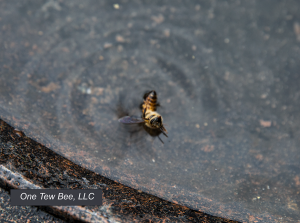
Figure 1. A water forager that misjudged an amphibious landing.
I have seen this time and again. A bee misjudges and lands in nearly freezing water. They only have a few minutes to get out of that cold water or they quickly become comatose, but interestingly, they can live for hours and hours in that cold water. I have taken them out, warmed them with my breath and sent them on their way. Why are they taking these dangerous foraging trips, and why did they misjudge the landing? I don’t know.
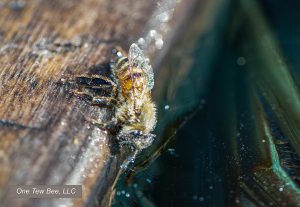
Figure 2. This frost-covered bee must have really been thirsty. There is a thin film of ice on the blue/green water to the right.
Should I whimsically reposition frames?
As beekeepers, we all do it. When we manage our colonies, we move frames to different positions within the hive. Should we? I know a very few of you number your frames and put them precisely back where you got them, but most of us don’t always do that. Colony management is filled with variables. What if it is for the greater colony good?
In natural colonies, combs are built and are never moved. Over time, the brood nest may be moved to different locations within the nest cavity, but individual combs stay in the same position.
How much does it affect the natural organization of a colony to have brood and food frames moved about within the hive? I don’t know. So long as I am not breaking up the brood nest and I’m keeping the honey in (seemingly) proper areas, I will continue to do it. But I will always wonder how much this comb movement disrupts the organization of the colony.
Do foundation inserts affect wintering success?
Roughly measured, the midrib of natural comb may be something like a thin sheet of newspaper or about .004” thick. The midrib of a foundation insert is about .03” or about eight times thicker. Overall, if I include the shallow pre-formed cell walls, a foundation insert is nearer to ⅛” thick.
Wintering bees put their heads in cells within the nest area to generate heat. Other bees that are not in cells surround those heat-producing bees to insulate them and hold the heat in the cluster. Does that significantly increased midrib thickness require wintering bees work harder producing heat?
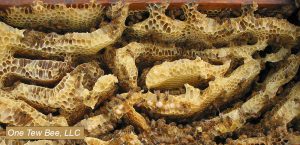
Figure 3. This is the way the bees like their lives.
I am suggesting that wintering bees with their heads in natural wax cells – remember that their heads are the warmest part of their bodies – are very nearly touching each other – head-to-head. All that separates their two heads is a beeswax film thinner than the thickness of a sheet of newspaper. Yet, I put in a barrier that is eight times thicker to separate the several thousand bee heads and that are now much more separated. I sense that the bees must work harder, but just how much? Beekeepers, does this minuscule point matter in the wintering scheme of things? I don’t know. But that leads the next similar question.
Are nice, straight combs good or bad for the bees?
Straight combs are a fundamental requirement for modern beehive management, but I cannot tell that the bees have ever liked them. Believe me, younger beekeepers, you have no idea how much time was required to assemble wooden frames, install eyelets, wire those frames, install beeswax foundation and then electrically embed the wires into the wax foundation – ergo – I love, just love using foundation inserts.
But what did the bees give up to live in our new, improved concept of what the hive interior should look like? Not only are comb midribs much thicker, but the long straight combs don’t seem to be conducive to housing a tight, efficient Winter cluster. A wintering cluster on straight frames is essentially composed of several smaller, separated wintering clusters. The frames are straight and there is no way for wintering bees to intermingle within the overall cluster – but only their small part of it. Would bees Winter better in a nest of their design with combs weaving and twisting in seemingly random order? I don’t know, but I do know that I like straight combs.
Smoke effects
Smoke effects on you and me
“Smoke may smell good, but it’s not good for you. The biggest health threat from smoke is from fine particles, also called fine particulate matter or PM2.5. These microscopic particles can get into your eyes and respiratory system, where they may cause burning eyes, runny nose and illnesses, such as bronchitis.” (Wood Smoke and Your Health, Environmental Protection Agency https://www.epa.gov/burnwise/wood-smoke-and-your-health#)
I grew up outdoors. Campfires were common. Burning piles of Autumn leaves were the norm. In my earliest years, my great grandparents actually burned most of their trash. Everyone had a burn pile. Fire and smoke were common. If you build a fire, then there will be smoke. That was the beginning and end of that. Smoke smells hanging in the air of my early life were common.
I became a beekeeper and was immediately introduced to the basic tool that is older than the classic hive tool – the bee smoker. I saw nothing novel about that. All I had to do was build a small, smokey fire in a bellows-assisted canister. I was told that smoke forced bees to engorge on honey in preparation for departing their burning hive. At the time, I bought that fairy tale. It was only later that I began to wonder what would happen to the fertile, heavy queen that would be essentially unable to fly with the departing bees.
Things change. Then the reason morphed to the explanation that the smoke masked internal hive pheromonal systems and that bees could not amass an organized defensive response. That’s pretty much where I am now, but that explanation still has holes in it. Why would masking pheromones with smoke make bees engorge on honey? I don’t know.
Smoke effects on the bees
What are the effects of smoke on bees? I don’t know. I do know that it “calms” them or does it just confuse them? I do know that I could not work a testy bee colony without dependable quantities of smoke. So, the use of smoke on bee hives is seemingly not going away any time soon. It’s too valuable as a management tool.
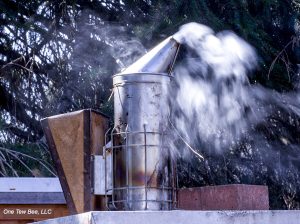
Figure 4. A classic bee smoker – on the job generating smoke.
Honey bees are tropically derived insects. Fire and smoke have long been a part of their natural world. Does that relationship imply that smoke is in any way good for bees? I don’t think so. I suspect that smoke is deleterious to the respiratory system of bees just as it is for my respiratory system. How bad – I don’t know.
Smoker fuels
The list of potential smoker fuels used in this country and around the world is huge. It would seem that nearly any product that can be burned has been used for smoker fuel. Burlap, leaves, wood shavings, cow manure, rolled corrugated paper, cotton cloth, punky wood, sumac pods and wheat straw are examples of fuels that beekeepers have used in their smokers. Is any one of them better (safer?) than any other? I don’t know.
Years ago, I communicated with a respiratory specialist who kept bees. He had invested some intellectual energy in analyzing smoke fuels and felt that smoke from wheat straw had the least amount of byproduct volatiles. I generally use wood shavings in my home yard when applying smoke and pine needles, that are readily available, when I am in my remote yard.
But the use of pine needles as smoker fuel, though used all over the southeastern and Midwestern U.S., is apparently problematic. Csinca wrote to me saying, “We talk, write and read about the compounding multi chemical exposure (including pesticides, pollution and pest control chemicals). Do you want to add something to that with your smoker fuel too? The pine oil itself has more than 23 chemical compounds and combined with the high temperature in the smoker, the outcome will be highly unpredictable, but for sure won’t help the bees.” (Csinca, Tibor. 2015. Personal Communication. Forestry engineer and hobby beekeeper.) Now, I am considering eliminating a common smoker fuel – pine needles – from my common smoker fuel list. Another change?
When I am conscientiously working colonies and expect to be in them for a while, I now wear a respirator to protect my lungs from the smoke. I have the remnants of childhood asthma and I instinctively do not like breathing smoke. However, I have noticed that after a long day in the bee yard, my unprotected eyes are also irritated. Did the smoke do this, too?
In any case, I would suggest using billowing white, cool smoke and only use as much as is needed to subdue the colony. Rather than apply a lot of smoke a few times, I try to use a little bit of smoke frequently. Is this the right thing to do? I don’t know.
It’s not just beekeeping
Believe me, it is not only beekeeping that seems to have endless unanswered questions. I have many, many unanswered questions about topics that are non-bee related. The side effects of medications that I am expected to take, what foods are safe for my general health and am I exercising enough are some quick vague questions to which I do not presently have answers. It would appear that questions, without obvious answers, will always be with us.
Thank you
Thank you for making it this far through this piece. I always appreciate your time and thought.
Dr. James E. Tew
Emeritus Faculty, Entomology
The Ohio State University
tewbee2@gmail.com
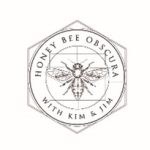 Co-Host, Honey Bee Obscura Podcast
Co-Host, Honey Bee Obscura Podcast
www.honeybeeobscura.com








